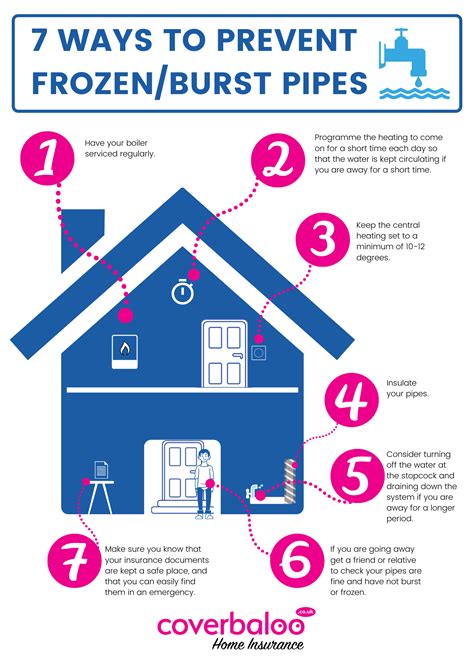Frozen Pipes: Prevention is Better Than Cure
Frozen pipes are a homeowner's nightmare. Not only can they cause significant water damage, leading to costly repairs and potential health hazards from mold growth, but they can also disrupt your daily life, leaving you without running water. While dealing with a burst pipe is a significant emergency, proactive prevention is far more effective and economical. This article will guide you through the best strategies to prevent frozen pipes and what to do if disaster strikes.
What Causes Pipes to Freeze?
Before we dive into prevention, understanding the cause is crucial. Pipes freeze when the surrounding temperature drops below freezing (0°C or 32°F) for an extended period. This is especially problematic in areas with exposed pipes, such as attics, crawl spaces, and exterior walls. Cold air seeps into these areas, chilling the pipes and causing the water inside to freeze and expand. This expansion puts immense pressure on the pipe, potentially leading to cracks or bursts.
How to Prevent Frozen Pipes: A Comprehensive Guide
Preventing frozen pipes involves a multi-pronged approach focusing on insulation, heat, and water flow. Here’s a detailed breakdown:
1. Insulate Your Pipes
This is the most effective preventative measure. Insulation creates a barrier between your pipes and the cold air, preventing heat loss and keeping the water flowing.
- Pipe Insulation Sleeves: These foam sleeves are inexpensive and easy to install, slipping directly onto exposed pipes.
- Insulating Blankets: For larger pipe sections or groups of pipes, insulating blankets provide a more comprehensive solution.
- Insulate Your Walls and Attic: Proper insulation in your home’s exterior walls and attic significantly reduces the risk of pipes freezing, even those that aren't directly exposed.
2. Keep Your Heat On
Maintaining a consistent indoor temperature, even when you're away, is crucial. Setting your thermostat to at least 68°F (20°C) prevents significant temperature drops that could lead to freezing.
3. Let Your Water Drip
This simple trick keeps a small amount of water flowing through your pipes, preventing it from freezing completely. Let a slow drip run from faucets served by exposed pipes, especially those in exterior walls or basements.
4. Open Cabinet Doors
If you have pipes running through cabinets in exterior walls, keep the cabinet doors open to allow warmer air to circulate around them. This small step can make a big difference.
5. Seal Air Leaks
Any drafts or leaks can significantly lower the temperature around your pipes. Caulk and weatherstrip windows and doors to prevent cold air from entering your home.
What if My Pipes Freeze?
Despite your best efforts, pipes can still freeze. Here's what to do:
What to Do If Your Pipes Freeze?
- Locate the Frozen Pipe: Identify the section of the pipe that's frozen.
- Turn Off the Water Supply: Shut off the main water supply to prevent further damage if the pipe bursts.
- Apply Heat Gradually: Use a hairdryer (on a low setting) or heat lamp to gently thaw the pipe. Avoid using open flames or torches.
- Monitor the Pipe: Check for leaks once the pipe has thawed.
- Call a Plumber: If you're unable to thaw the pipe yourself, or if you suspect a leak, call a qualified plumber immediately.
People Also Ask (PAA) – Addressing Common Concerns
Here are answers to some frequently asked questions about frozen pipes:
How do I know if my pipes are frozen?
You might notice a lack of water flow from faucets, unusual noises (gurgling or clicking), or a bulge in the pipe. Cold spots along the pipe are also a clear indicator.
Can I use a space heater to thaw frozen pipes?
While a space heater can help raise the ambient temperature, direct heat from a space heater is not recommended as it can damage the pipe. A hairdryer or heat lamp are safer options for direct application of heat.
What is the best type of pipe insulation to use?
Foam pipe insulation sleeves are generally the easiest and most effective for individual pipes. For larger areas or groups of pipes, consider using insulating blankets or foam boards.
How can I prevent frozen pipes in an unoccupied home?
Maintain a minimum temperature of 68°F (20°C) and consider letting a slow drip run from faucets in exposed areas. You could also ask a neighbor or friend to check on your home regularly.
What type of damage can frozen pipes cause?
Frozen pipes can burst, causing significant water damage to your property, leading to structural damage, mold growth, and costly repairs.
By implementing these preventative measures, you can significantly reduce the risk of frozen pipes and the associated headaches and expenses. Remember, prevention is always better than cure when it comes to protecting your home's plumbing system.

